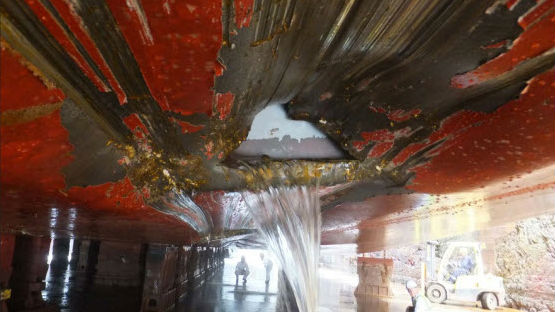Grounding Report: ECDIS Alarm Disabled

The Bahamas registered ro-ro passenger ferry Commodore Clipper grounded on a charted, rocky shoal in the approaches to St Peter Port, Guernsey.
No-one was injured, there was no pollution, but there was significant raking damage including breaches of the hull resulting in flooding of double-bottom void spaces.
The grounding caused a noisy, shuddering vibration that reverberated throughout the ship, but the crew did not check for damage, no external report was made and no safety announcements were made to the passengers.
Once alongside in St Peter Port, cargo discharge, reloading and a lifeboat drill went ahead as planned. However, a pre-planned divers’ inspection of the hull soon discovered damage and the vessel was withdrawn from service.
The investigation found that there had been insufficient passage planning for the voyage. For the transit through the Little Russel, the extremely low tide and effect of squat were not properly considered. This resulted in the bridge team being unaware of the limits of safe water available and thus, despite their good positional awareness, they headed into danger without appreciation of the risk.
Several course alterations intended to regain track were ineffective due to the tidal stream setting the vessel off course. Additionally, the absence of any alarm, steering and propulsion responding normally, and the master’s conviction that there had been sufficient depth of water, led to a collective denial of the possibility that the vessel might have grounded.
The company’s approved route was not followed, and the vessel’s electronic chart display and information system was not used effectively because key safety features were either disabled or ignored.
Had all the factors affecting under keel clearance been accurately assessed, it would have been apparent that it was potentially unsafe to pass over any charted depth less than 7.5m in the Little Russel, the report states.
The highly repetitive nature of Commodore Clipper’s schedule induced a degree of planning complacency. Although the primary method of navigating in the Little Russel was visual, ECDIS was not used effectively as a navigation aid. In particular, the safety contour value was inappropriate, the cross track error alarm was ignored and the audible alarm was disabled. The layout of the central bridge console prevented the chief officer from using the ECDIS display to support the master during pilotage.
Additionally, the significant navigational risk routinely being taken by the crew of Commodore Clipper and the ECDIS non-conformity went undetected by audits and inspections.
The report is available here.